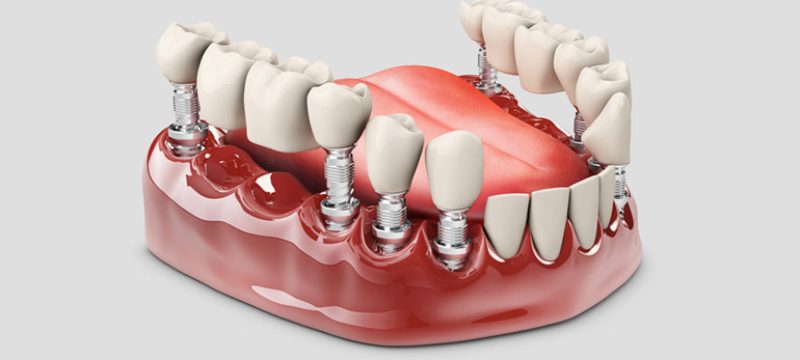Crown & Bridge
Crowns and Bridges are two different prostheses and are used to restore the natural structure, function, and appearance of teeth that have been damaged or lost.

What are Crowns and Bridges?
A dental crown is a tooth-shaped cap placed over a damaged or decayed tooth to restore its strength and shape. It is typically made of porcelain, ceramic, or metal alloys and is designed to fit over the prepared tooth structure.
A dental bridge, on the other hand, is a combination of crowns in a unified body that replaces more than one missing tooth. It consists of one or more artificial teeth (pontics) that are anchored in place by two dental crowns, which are placed over the adjacent teeth. The crowns serve as anchors or abutments for the bridge and provide stability and support for the replacement teeth.
When Do You Need Crowns or Bridges?
Crowns and bridges are highly economical options for various tooth related problems. The major need for crowns and bridges arises when you lose the tooth due to decay, trauma, periodontal problems, cosmetic needs, or avulsion. They are made of metal, ceramic or zirconia and are highly biocompatible. However, there are many other cases where the crown and bridges may be needed.
Classic Signs Suggestive of Crowns and Bridges
Simple Extractions
When tooth decay has progressed to a point where a filling is no longer a viable option, a dental crown may be necessary to restore the tooth.
Tooth fracture
A cracked or broken tooth may require a crown to prevent further damage and restore the tooth’s function.
Root canal treatment
After a root canal procedure, a tooth may become weakened and require a crown to protect it from further damage.
Large fillings
When a filling is too large, it can weaken the tooth and may require a crown to provide additional support.
Missing teeth
A bridge can be used to replace one or more missing teeth and restore a patient’s ability to chew and speak properly.
The Procedure of Crowns and Bridges
The crowns and bridges are two different prostheses but their fabrication and placement inside the mouth is done the same way.
- Evaluation: The first step is for the dentist to evaluate the tooth and determine if a crown or a bridge is necessa
- Tooth Preparation: The tooth is then prepared by removing any decay or damage and reshaping it to make room for the crown.
- Impression Making: An impression of the tooth or multiple teeth is then taken to create a custom-fit crown through the custom trays using alginate (dental impression material)
- Temporary crown: A temporary crown or a bridge may be placed on the tooth to protect the fiction and the aesthetics while the permanent crown is being made.
- Crown or Bridge Cementation: Once the permanent crown is ready, it is cemented onto the tooth and adjusted for a comfortable fit. All the high points from the crown or bridge are removed to ensure a comfortable fit.
FAQs – Crown & Bridge
Q: Will the crowns and bridges last for a lifetime?
A: Once placed correctly, the crowns and bridges can last for years. However, in some cases, they may chip, wear, or become loose if there is decay or problems in the surrounding tissues. In most cases, the crowns and bridges can be fixed by the dentist easily.
Q: Is the crown placement procedure painful?
A: Absolutely not. The dentist only has to cement the crown on the tooth thus it will cause no pain.
Q: Which crown or bridge should I go for?
A: Depending on the position of the tooth and your budget, you can choose any crown from metal crowns, PFM (porcelain fused metal) crowns, or Zirconia crowns.
Q: What is the cost of the crown and bridge?
A:The cost of crowns and bridges depends on the type of crown, the material used to make it and the area to cover. To get the exact cost of crowns & bridges.
